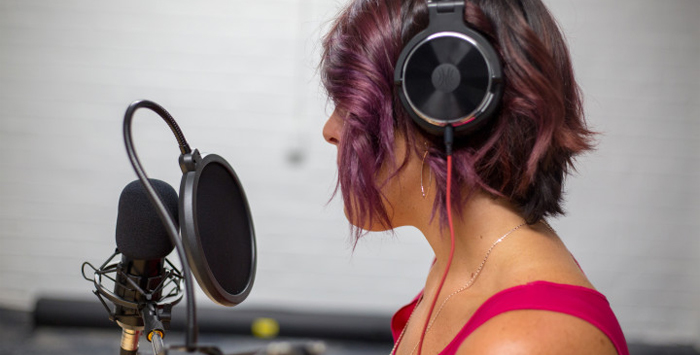With every new iPhone rollout Apple has, there are video and image quality improvements, and Apple is constantly striving to improve different parts of the product. However, one part which has always been rather neglected are iPhone microphones.
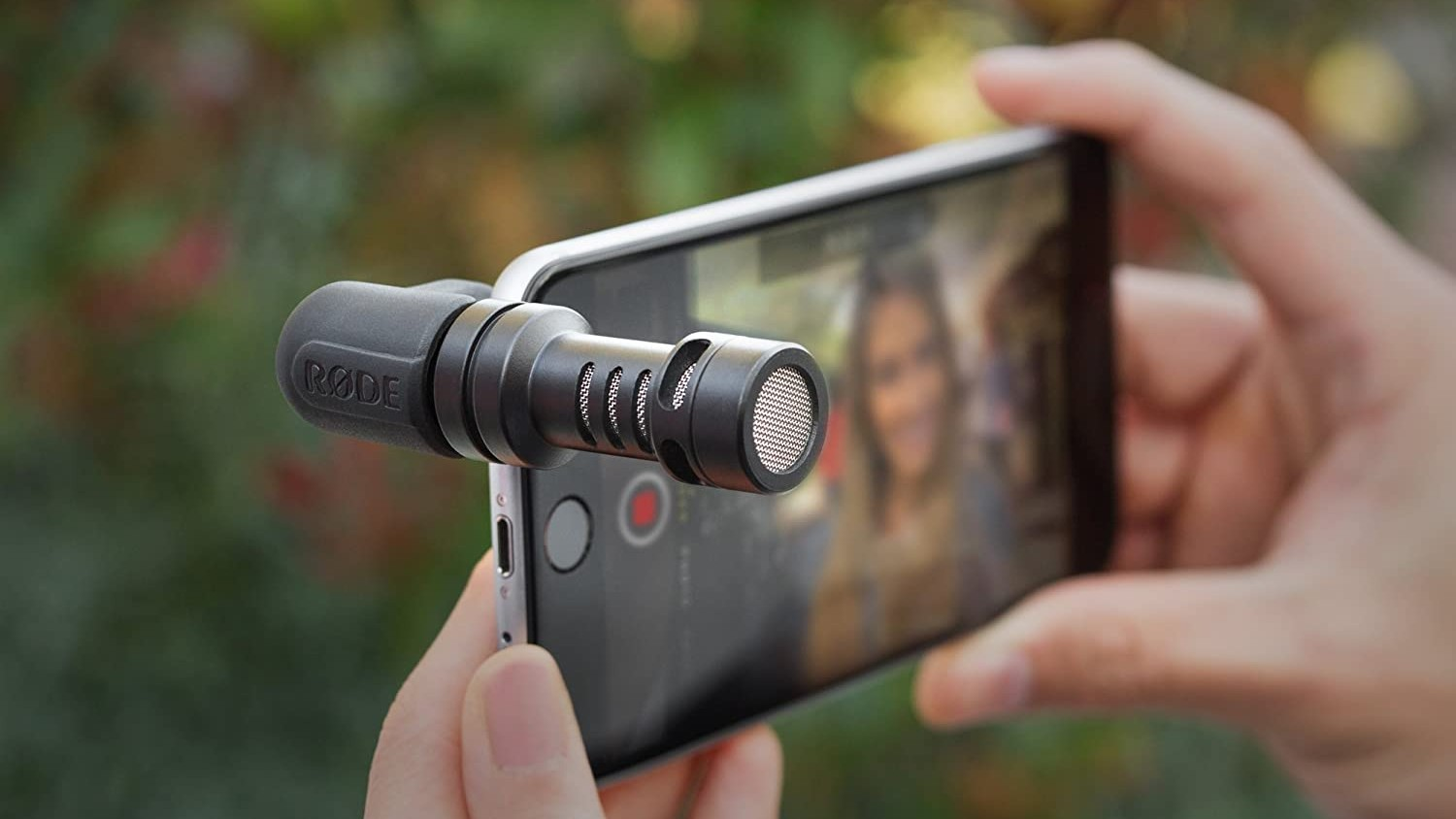
Anyone trying to record audio for video, or just audio period, will find the built-in iPhone microphones inadequate for professional or even semi-professional use.
The mic system simply isn’t good enough. It picks up operational and handling sounds that have poor coverage and offers no wind or noise protection whatsoever.
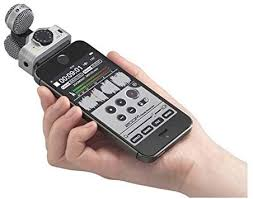
Smartphones operate with a very restricted frequency range, around 300Hz to 3.4kHz. As a result, they use very low bit rates. One way an external microphone can score over the iPhone’s built-in one is by having a much wider frequency range. This means external microphones will record much better audio.

In addition, iPhone microphones may be faulty, and you may need a quick, superior fix. If you’re trying to create content, conduct an interview, record a voice-over, or just feel the need for better audio, you’ll need much a better external microphone.
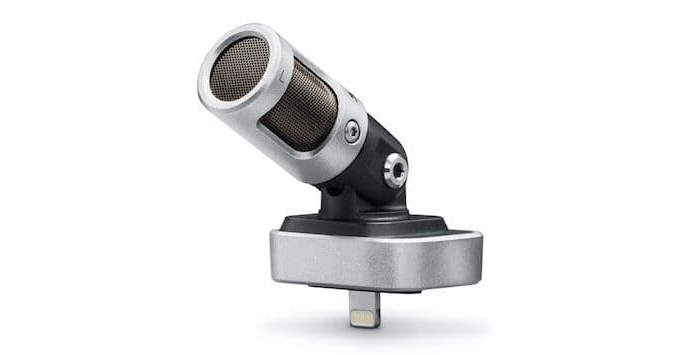
Using external microphones alongside a phone may seem weird or crude if you’re not typically tech-savvy. However, it is worth doing because it can significantly improve your audio.
Even a simple lavalier microphone (a lapel microphone that’s worn) can make a huge difference. And there is a wide range of microphones available on the market.
But anyone familiar with the Apple ecosystem knows that compatibility with non-Apple products can be a headache.
Here is the Smartphone Video Production guide for you to read: Smartphone Video Production: iPhone 13 v Samsung s21 v Pixel 6.
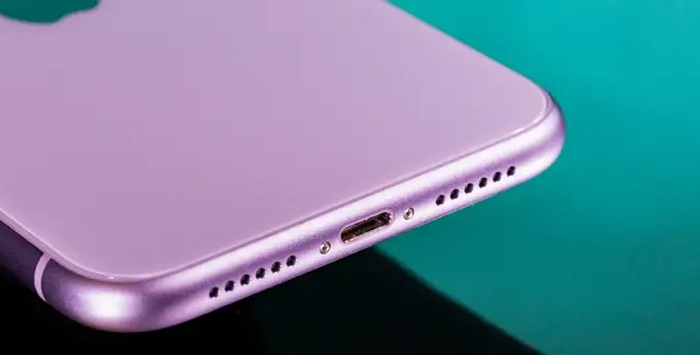
This is made worse by Apple’s refusal to switch to the universal USB-C on all products or to keep a headphone jack. While some models of iPad do now have USB-C compatibility (and some also still have a headphone jack), iPhones have neither.
Any brand that wants their devices to be compatible with iPhones and other Apple products needs to work around that by building a Lightning headphone jack adapter or attaching an adapter that can simulate that.
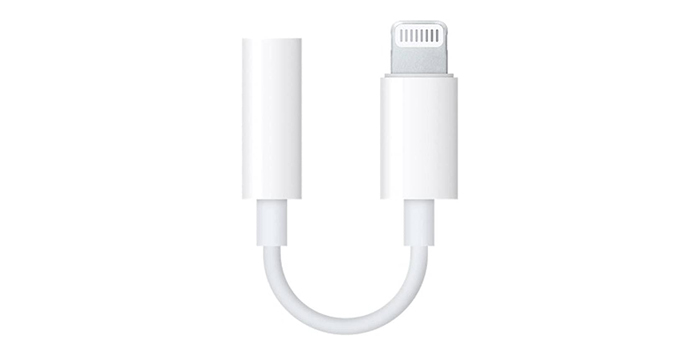
Adapters, however, are a bit clumsy. In addition, wires and extra contraptions can dissuade users from using microphones, who opt to make do with the built-in microphone for iPhone instead.
Therefore, once you’ve decided to get an external microphone, you’re likely to find a narrow but competitive product market, reducing the number of options for iPhone microphones.
However, we’ve got you covered if you are looking for the best iPhone microphones for your setup but are unsure about which brand to get. If you need an external microphone for iPhone audio recording, look no further!
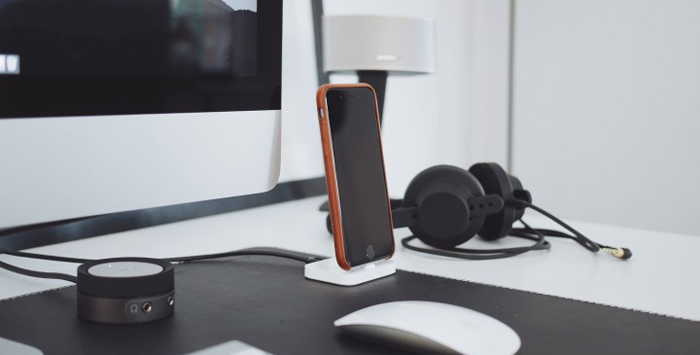
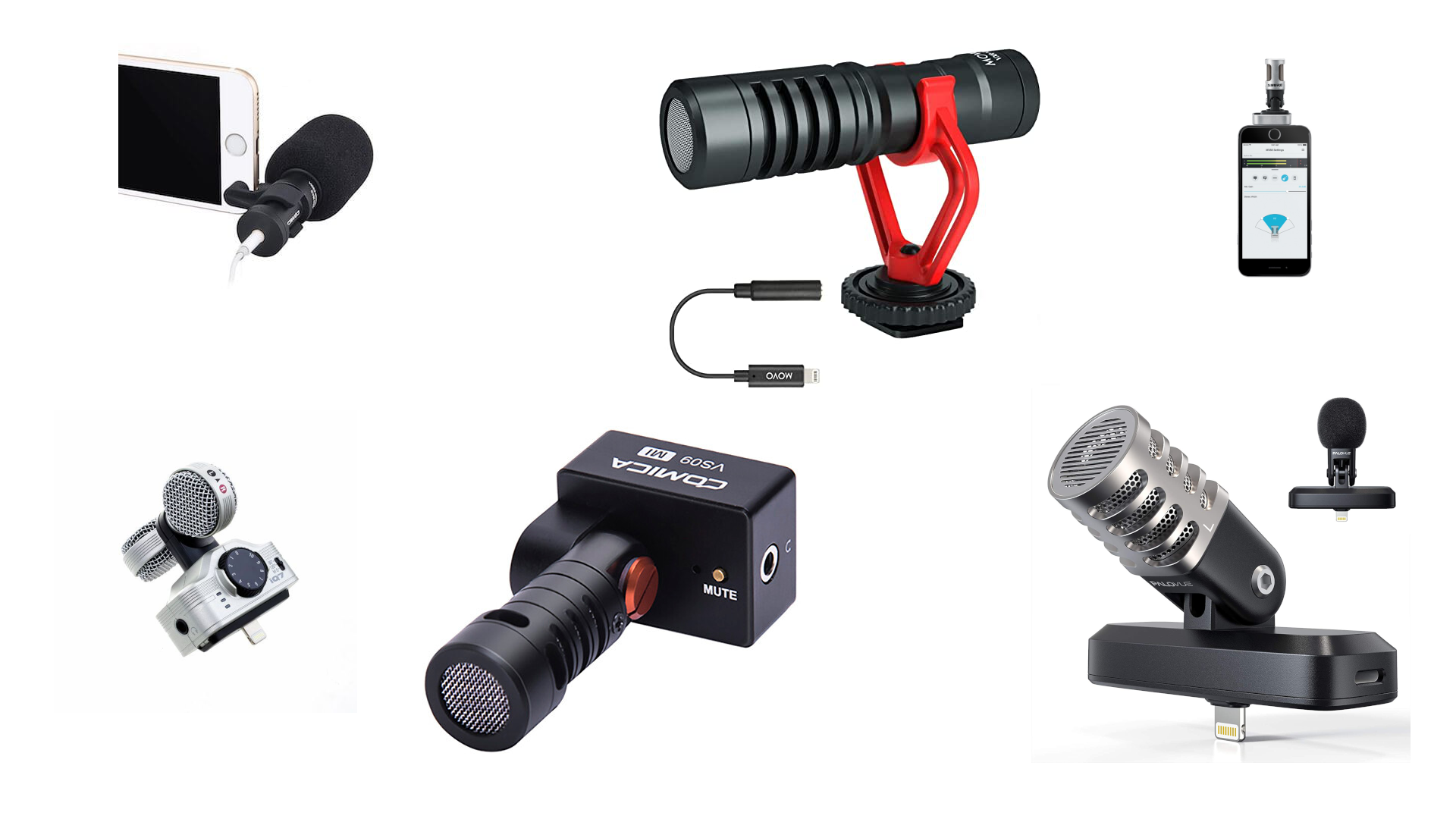
These are the adapters that can really make a difference to the quality of your audio recording. They represent some of the best iPhone microphones that are available today.
$79
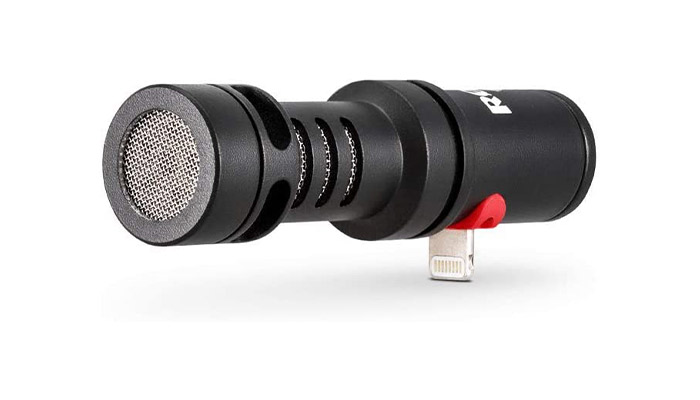
The Rode VideoMic Me-L is a shotgun mic that can plug directly into iOS devices through a Lightning port (the L in Me-L stands for Lightning).
It is a small shotgun microphone and uses its connection point as a mount. It features a cardioid capture pattern, which focuses on capturing directly in front of the capsule to ensure intelligible and clear audio.
While crafted for iPhone and iPad use, the mic offers a 3.5mm TRS headphone socket that can be used for backup analog recording but is mainly used for direct monitoring while recording with an iOS device.
This is useful as you’re giving up your lighting port for the input and power supply, so there’s no other way to monitor what you’re capturing in real-time.
Its minimalist design and plug-and-play form factor make it ideal for mobile iOS recording. In addition, the audio quality is superb and provides studio-quality sound. So whether you are recording music or speech you know the end result will sound great.
Although targeted at podcasters, YouTubers, and filmmakers shooting on an iPhone, this Rode microphone is compatible with all Apple iOS devices operating on iOS 11 or higher.
It possesses a solid build quality with a durable, gaunt chassis that’s resistant to scratching. Moreover, the iPhone or iPad powers the device, so no additional batteries are required.
It also features a huge windscreen, also known as a dead cat. It works very well at quelling wind, so if you are in a quiet environment, you can get away with using it from several meters away.
However, it is rather conspicuous and receives a lot of attention. In addition, the size makes it difficult to film with, and there’s no chance of using it discreetly. So if you are looking to do a little stealth recording in windy conditions this is definitely something to keep in mind.
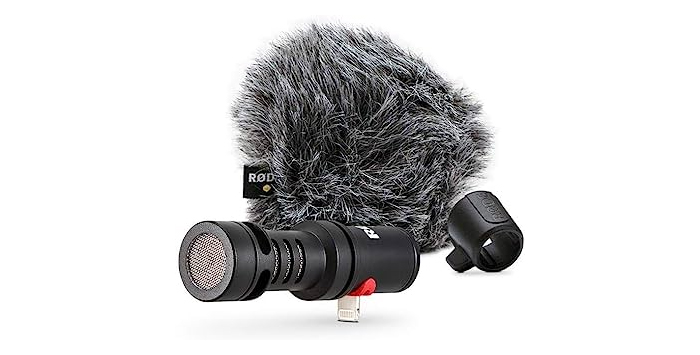
The microphone’s Lightning connector is relatively short, so you’ll have to remove your phone cover or risk the microphone randomly disconnecting from your iPhone.
This Rode mic offers crisp recordings that rank highly among the best of its class. It works seamlessly with the Rode app and provides a frequency response of up to 48kHz.
Its background noise cancellation is also elite and will keep out any unwanted noise. This makes it an excellent iPhone microphone and a great choice to buy.
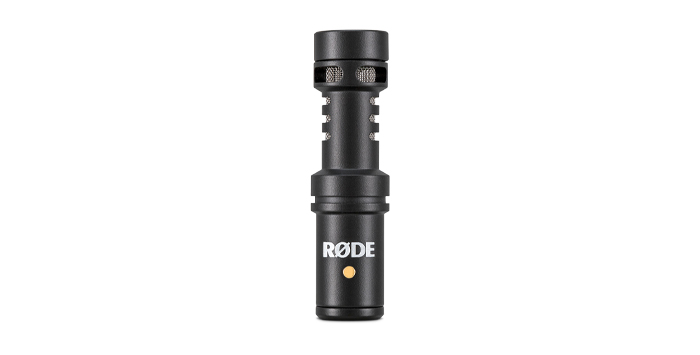
$149
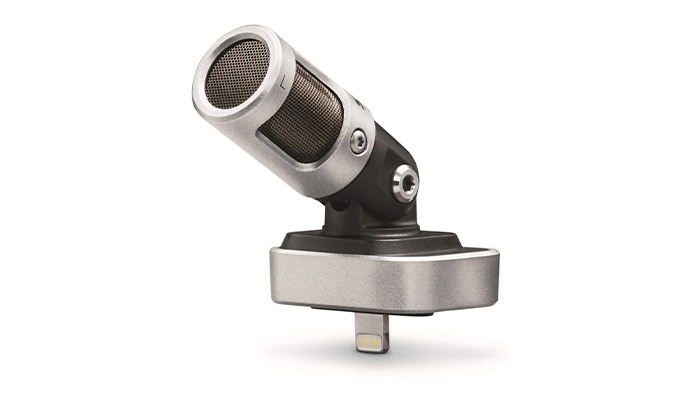
When it comes to condenser microphones, the Shure MV88 is a great choice. The microphone records crisp, clear recordings in 48 kHz/24-bit, making it suitable for near-professional use. It really is one of the best iPhone microphones.
This plug-and-play mic is powered by your iOS device and can capture in either cardioid mode or bidirectional mode. Cardioid is best for recording from a singular direction. Bidirectional works when you want to record from different directions.
You can also utilize both the cardioid and bidirectional mono capsules together if you want to. You will get a natural stereo-sounding outcome since they are configured in an M/S orientation.
Just like the Rode VideoMic Me L, there’s a mismatch between the Lightning connector length and the Lightning port, so you’ll likely have to remove the case from your phone or tablet like with the Rode for the mic to connect correctly.
This is inconvenient, but given the quality audio the mic captures it is not necessarily a deal-breaker. However, it would be worth Shure addressing this in a future release or update.
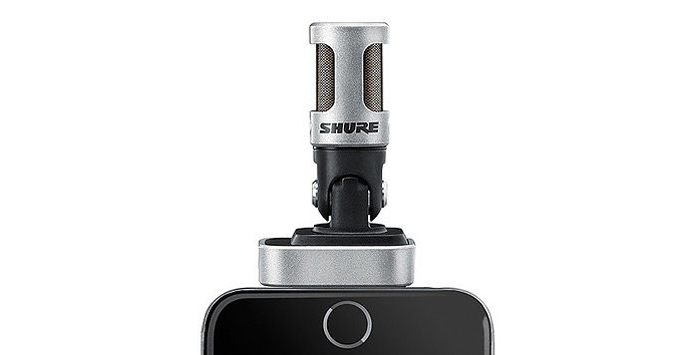
The Shure MV88 comes with a handy windscreen for filming in the wind or around noise. This is effective at cutting down any disruption to the audio quality and works well.
The mic works perfectly with the Shure Motiv app, allowing you to control digital signal processing, bit rate, sampling rate, mode switching, and many other things. This helps reduce post-production work.
The mic does not come with a headphone jack, since the MV88 was released after Apple got rid of the headphone jack. However, you can use Bluetooth headphones to monitor while recording. This works well and the Bluetooth audio quality is high.
In addition, the MV88 delivers clear, dynamic sound and can handle up to 120 dB without distorting.
The MV88 might be a latecomer to the iPhone microphone market, but its dynamism, flexible recording options, and solid performance should carve it a spot.
If you want to record via your iPhone while on the go, you’ll get significantly better audio quality by opting for the Shure MV88. It’s a solid choice.
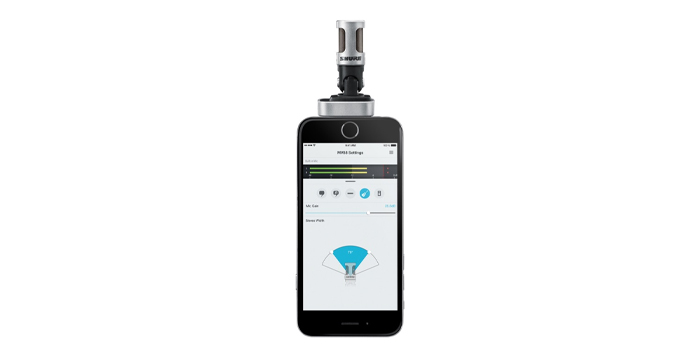
$99
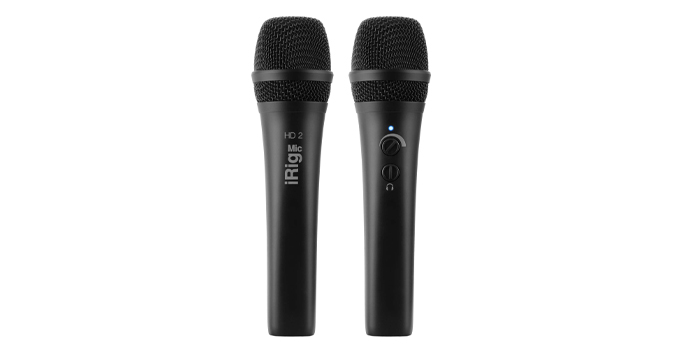
IK Multimedia already have a good reputation in the microphone market but with the IK Multimedia iRig Mic HD2 they have gone in a different and unique direction. Rather than going for a design that either sits in the Lightning port or clamps to the top of another device, the iRig is much more like a traditional microphone.
That means that it is an ideal choice for interviews or as a podcast microphone. The device comes with a tabletop stand so you can use this either as a handheld or as a static mic. Being able to move the microphone easily between, say, a host an interview subject makes it much easier to get consistent volume levels and produce the kind of audio quality you want.
There’s plenty of other microphone accessories included as well, including a microphone stand adapter and a carrying pouch, so this definitely isn’t a bare-bones offering. That makes this a flexible setup without any additional financial outlay.
The microphone feels sturdy and doesn’t sacrifice build quality for weight. The main body of the microphone is metal, as is the grille, and feels like it could take a beating and still keep the precious innards safe and secure.
At just over 11oz it’s certainly light enough to carry around as a portable solution, even if it isn’t the lightest microphone on this list.
However, there’s no wind shield with this microphone, so if you are planning on using it outside you may want to consider getting one as an additional investment.
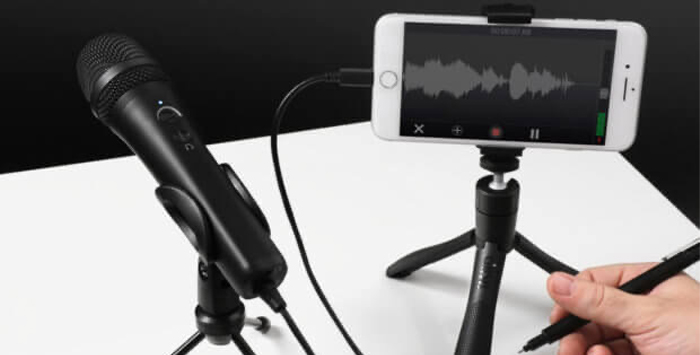
When it comes to sound recording, the quality of the audio captured by the iRig Mic HD2 is extremely good. It has an analog to digital converter that is 24-bit, audiophile standard so you’re looking at professional audio quality. Sample rates are up to 96KHz, so the iRig can capture plenty of details and even the quietest of sounds.
It has a cardioid condenser capsule so it is a directional microphone. There is a built-in headphone output in the base of the microphone, so you can monitor your levels live when the mic is in use. There is also an onboard gain control for you to control your levels without having to reach to unlock your phone ever time.
This is a great microphone for iPhone users but it is also compatible Mac and PCs as well, so if you find yourself having to work on different platforms you can be sure this mic will be there for you.
In addition to the hardware, IK Multimedia have also thrown in a great software bundle too. There are a number of plug-ins that you can add to your DAW while editing your recording. There is also mic room modeling software, letting you software-emulate different microphones which makes this an incredibly flexible solution.
If you need a hand-held microphone, the Mic HD2 is good quality and something really different in the iPhone microphone space.
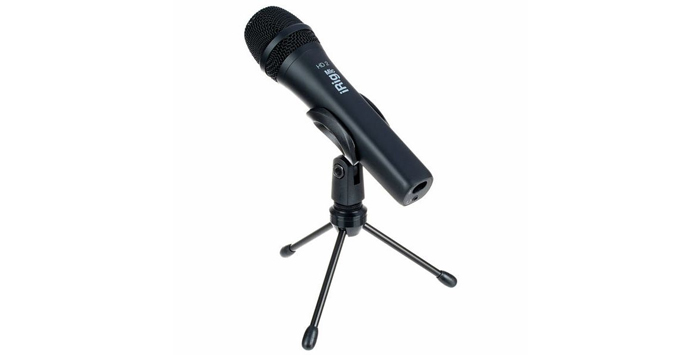
99$
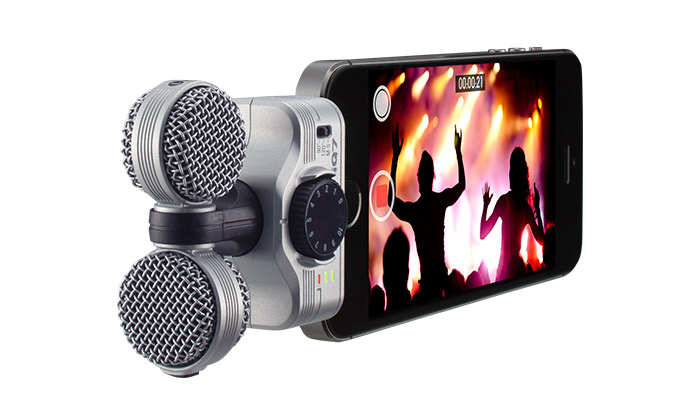
A longtime stakeholder in the microphone market, Zoom has stepped up from the iQ5 and iQ6 with their Zoom iQ7 ms stereo microphone.
The iQ7 is unique to both by being a stereo condenser mic. This means that it can receive audio signals from multiple channels giving your recordings the sensation of width.
This is achieved through the microphone’s design, where two mics sit at opposite angles. One captures the signal in front of it, and the other captures left, and right sounds. It also offers a slider to adjust how “wide” you want the resulting sound to feel, as well as a volume control knob.
This unique design feature makes it one of the most distinctive condenser microphones on the market, but it also gives it a real edge in terms of the competition.
When deciding on a microphone for iPhone recording, choosing something lightweight and compact has obvious advantages. The Zoom iQ7 is both of these, but unfortunately, this comes at a cost to the device’s build quality. The entire mic is made of plastic. Even the capsule for the mic is made of plastic.
It doesn’t have the phone case problem other microphones seem to have. Instead, a small removable spacer around the port can help adjust how the device fits.
It comes with a small removable windscreen for the mic, much smaller than the VideoMic’s dead cat. It offers neat left-channel and right-channel recording, although there may be significant overlap due to the distance between the microphones.
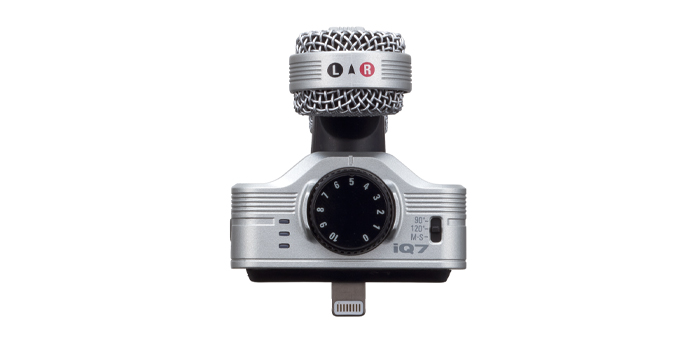
The iQ7 records excellent-quality audio. You can also switch to mono recordings with no hassle, making them appealing to people who demand mono compatibility for their stereo recordings.
The mics are arranged in a rotating capsule. This allows you to toggle the orientation for the best stereo recording. This mode switching adds a layer of complexity that may be undesired, but it offers flexibility and dynamism in the long run.
You can use the iQ7 alongside Zoom’s companion iOS app, Handy Recorder. This allows you to record, edit, and share audio files. It’s not the best iPhone app available, so you might want to consider using either native Apple recording software or another third-party app.
The app will let you decide what format you want to record in, from an uncompressed WAV to AAC formats from 64 to 170kbps. Handy Recorder also labels each recording by its format for easy identification.
This mic doesn’t offer RFI protection, which blocks interfering electromagnetic waves. Unfortunately, this means you can’t use this mic with recording apps requiring Wi-Fi or Bluetooth connectivity. You’ll get lots of clicks and pops while recording if you do.
With the iQ7, you can be sure that your audio will be better than your iPhone’s built-in mic. If you’re looking for a quick and easy way to get more professional, clear audio out of your iPhone, the iQ7 is a great choice.
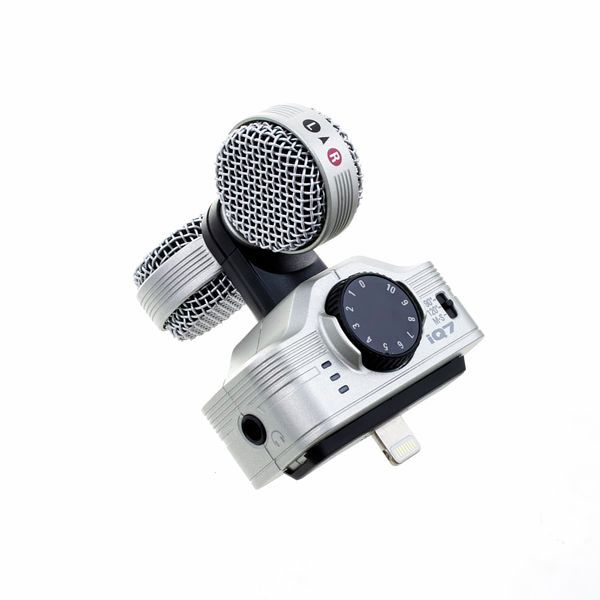
$50
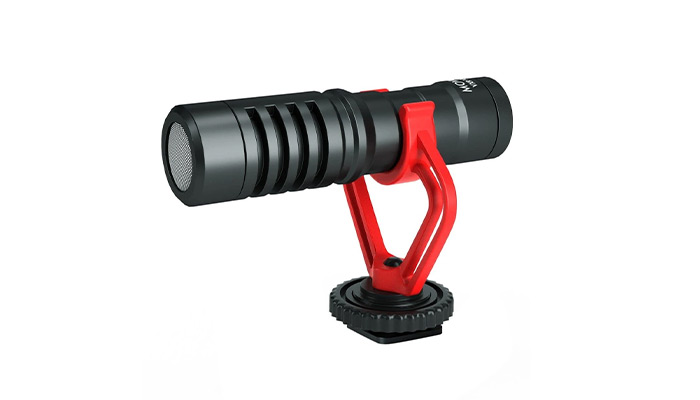
The VXR10 is a small, durable, and lightweight microphone for iPhone that can be used in perfect sync with cameras or smartphones.
It comes with a sturdy shock mount, a furry windscreen, and both TRS and TRRS output cables that work with pretty much everything from desktop computers and Android phones to iPhones. In addition, it doesn’t use batteries, so all you have to do is mount the camera on your device and plug it in.
The VRX10 is a super-cardioid shotgun mic, giving you a polar pattern that is better suited for iPhone recording.
In addition, it can accommodate a 35 Hz to 18 kHz frequency response, which is good enough for all kinds of media.
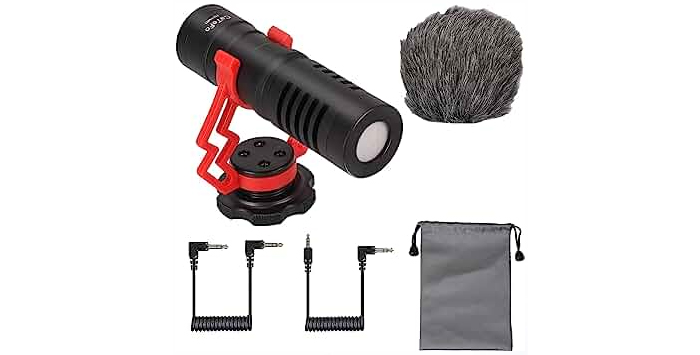
The VXR10 Pro doesn’t come with a Lightning cable. It connects fine with iPhones; rest assured. But it requires the user to buy additional hardware, and not including a Lightning cable is definitely an oversight.
If you want to mount the VXR10 Pro on a camera, then the shock mount is definitely a great addition to the package. The down side of this that it isn’t useful for anything else.
Something as simple as holding it or placing the mic down on a solid surface is extremely inconvenient. To use it in any way other than attached to a camera will require the additional purchase of a stand or other way to support it.
The construction of the microphone is very solid, and feels like a premium piece of equipment, even given the small price tag. The microphone should be able to handle knocks out on the road without any problems.
The VXR10 Pro doesn’t seem to have any noise filters, meaning recordings are filled with background noise. This isn’t an issue if you are a reporter and just need a quick clip to transcribe. However, if you are creating a podcast, video, or another project, you might run into some issues.
However, for $50 the VXR10 Pro is still great value for money, and offers recording quality that more than justifies its small price tag. If you are looking for some entry-level equipment without the need to carry around some outsized great then the VXR10 Pro might just be what you need.

$99
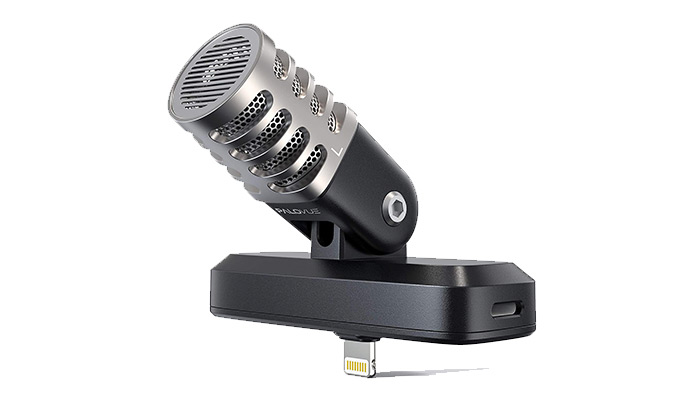
The Palovue iMic is a tiny omnidirectional mic that is Lightning-compatible and features noise cancellation. It is one of the best condenser microphones and records crystal-clear sound.
It is far superior quality than the in-built iPhone microphone and is great whether you want to record music or speech.
The iMic features an all-metal body and flexible head that you can rotate up 90 degrees towards and away from you.
It comes with an app you can use to adjust microphone settings. It cannot directly control the start and end of the recording, but you can adjust the gain, EQ, and volume.
This means that the app is a bit limited when it comes to functionality, though it’s not the worst app. You can also toggle a tab to mute or unmute the microphone. You can use the mic without the app, but it is best alongside it.
The microphone comes with a windscreen and also keeps the metal frame of the microphone clean, sanitary, and moisture-free.
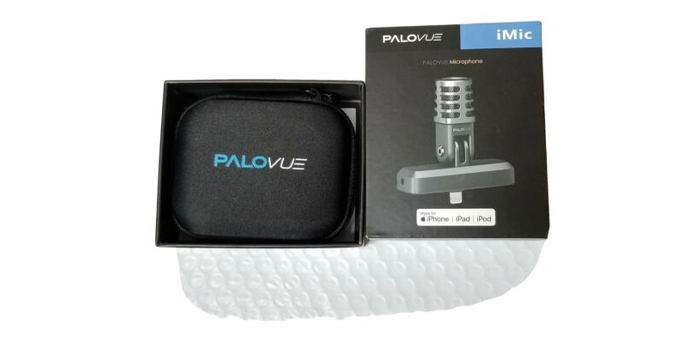
It comprises two microphone charcoal boxes arranged in a mid-side configuration, and it provides adjustable stereo sound suitable for capturing audio from various sources.
The iMic has an integrated 3.5mm headphone socket with which you can monitor your audio with a wired headphones.
It measures only 2.6 by 2.4 inches【𝟲 𝗰𝗺】, perfectly accentuating its plug-and-play design. In addition, it comes with two lithium-polymer batteries that charge even while recording (it has two jacks on the left and right ends, one for charging and the other for monitoring.)
The PALOVUE iMic Portable delivers high-quality sound, perfect for recording audio for podcasts, YouTube videos, and more.
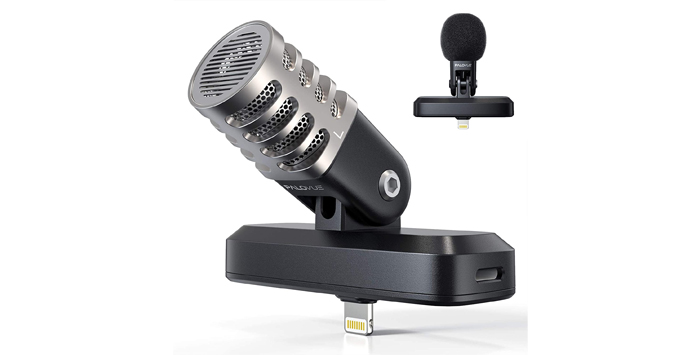
$35
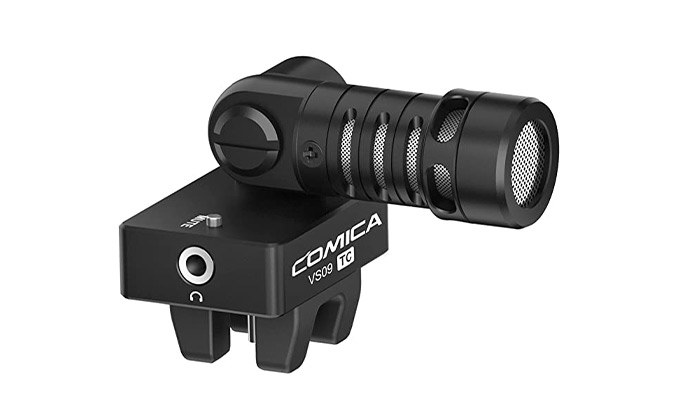
The Comica CVM-VS09 MI【𝟭𝟰.𝟱 𝗸𝗺】 is a condenser microphone designed for recording audio with smartphones. You can tilt the cardioid condenser capsule microphone up to 180 degrees with a rubber clamp which can help keep the unit secure from constant disconnection.
It is a compact microphone specially designed to be mounted on an iPhone or an iPad by plugging it directly into the Lightning port of these devices. The rubber clamp is effective and holds the microphone firmly to the iPhone.
However, the square design, along with the rubber clamp means that the two shapes of the devices don’t quite match up.
It provides a significant sonic improvement to audio and video recordings, especially compared to your iPhone’s built-in microphone.
In addition, with its 3.5mm TRS headphone port, it can provide real-time audio monitoring and allows you to make adjustments on the go.

The Comica CVM-VS09 mic is made of 100% aluminum, which provides an excellent anti-interference effect and ensures a stable recording environment. This makes it perfect for interviews and other purposes that demand uninterrupted audio or speech.
It features a mute button that enables you to mute the mic, ensuring that you only hear the audio you’ve just captured when reviewing your footage. The device has a USB-C output for you to connect it directly to a laptop or desktop computer.
It also comes with a dense foam windscreen that protects against wind noise when recording outdoors. This is effective at cutting down background noise and, as far as windscreens can be, is relatively discreet when placed on the microphone.
You can rotate the rotary microphone 180 degrees to match different usage scenarios and angles, meeting the diverse needs of the users. Because the build quality is good, the microphone stays in position and there are no worries that it might become loose over time.
This, alongside its alloy build, makes this microphone for iPhone ideal for vloggers, podcasters, and work-from-home video conferencing.
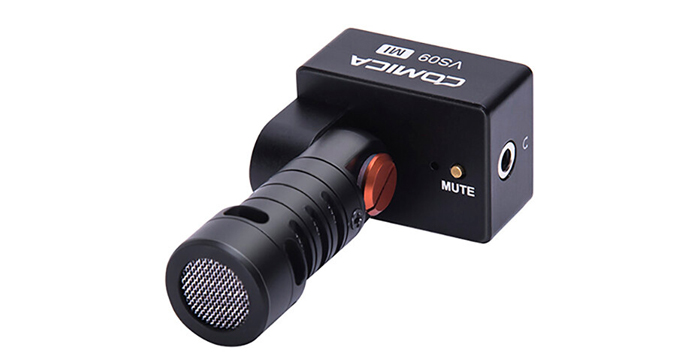
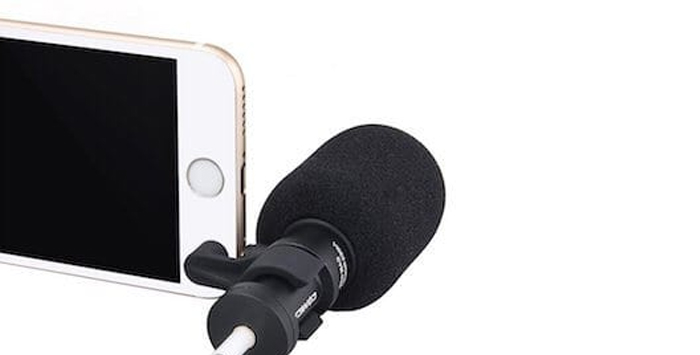
If you want to increase the standard of your work, you might want to start with the audio, and getting a microphone for iPhone recording is a great way of doing it. Getting external mics for your iPhone will definitely add that extra bit of dynamism to your iPhone footage and is a no-brainer for those who wish to record consistently.
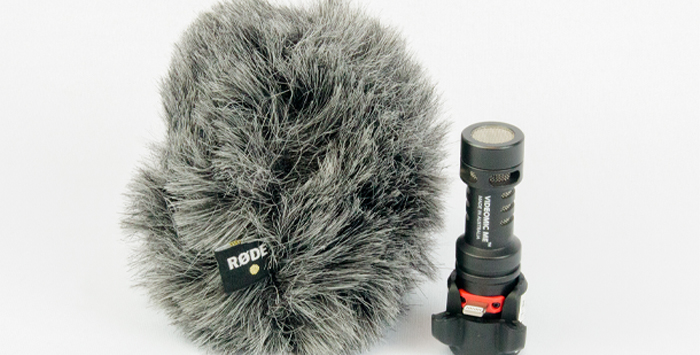
These are some of the best iPhone microphones in terms of subjective quality. They are top-of-the-line and will suffice for all your audio needs. Choosing the best microphone for iPhone is still hard, though, so we’ve made it easier.
Whichever brand you decide on ultimately depends on your budget as well as your personal and professional leanings.
